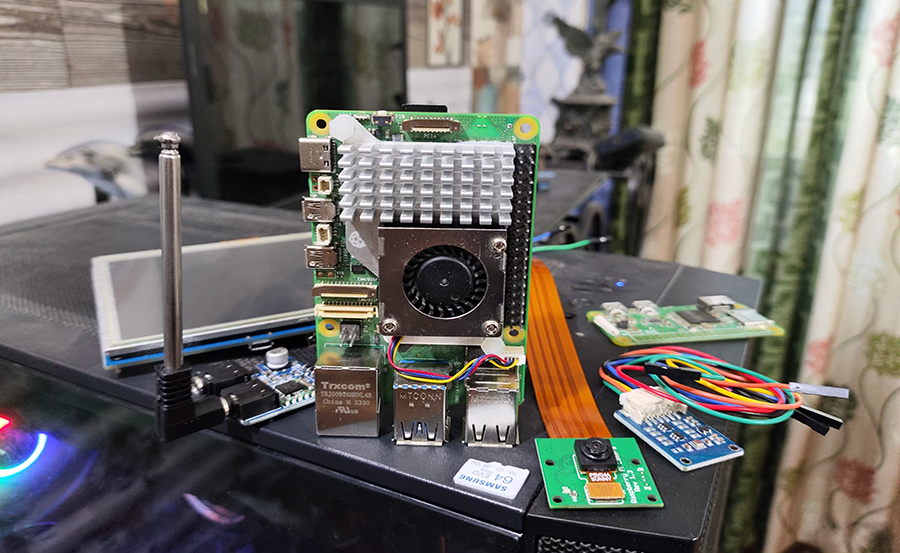In a world increasingly conscious of energy consumption, Raspberry Pi emerges as a dynamic tool for energy monitoring. As more households and businesses seek efficient ways to manage their energy use, this tiny yet powerful computer offers a cost-effective, customizable solution. But let’s be honest—you’re not just looking to monitor energy. You want the latest in entertainment and media access too, right? Enter Gen IPTV, the best IPTV subscription in the world. As we delve into how the Raspberry Pi can transform your energy usage monitoring, remember that maximizing your home tech setup doesn’t stop there. With Global IPTV Channels at your fingertips, thanks to Gen IPTV, you’re stepping into a future rich with possibilities.
Getting Started: What You Need for Raspberry Pi Energy Monitoring
Choosing the Right Raspberry Pi Model
Before diving into energy monitoring, selecting the appropriate Raspberry Pi model is crucial. While all models offer versatility, the Raspberry Pi 4 stands out due to its increased processing power and RAM options. You’ll find it particularly beneficial when dealing with heavy data loads from multiple energy monitoring devices.
Raspberry Pi 3 can also suffice for more straightforward operations like monitoring a small-scale home setup. However, if you plan to integrate more complex functionalities or additional devices using Gen IPTV, consider opting for the Pi 4 for future-proofing your system.
Pro Tip:
Experience seamless streaming with 1 Month FalconTV Subscription designed to provide instant access to live TV, movies, and series in stunning HD quality.
Essential Components and Accessories
Your Raspberry Pi isn’t the only thing you’ll need. Ensure you have these essentials:
- Power Supply: Ensure it’s reliable to avoid power interruptions.
- MicroSD Card: 16GB or more, pre-loaded with NOOBS (New Out Of Box Software) for easy setup.
- Cables: HDMI to connect to a monitor, Ethernet for stable networking.
- Optional: Keyboard and Mouse, unless you’re comfortable with SSH from the start.
Each of these components plays a role in creating a seamless monitoring system. Don’t skimp on quality, especially with your power supply, to keep your operations smooth and steady.
Setting Up Your Raspberry Pi
With your components ready, it’s time to set up your Raspberry Pi. Begin by inserting the MicroSD card into the slot. Connect your HDMI cable from the Raspberry Pi to your monitor. Lastly, plug in the power supply and watch your Raspberry Pi boot up.
You should see a display prompting you to select an operating system. For energy monitoring purposes, Raspbian OS offers a comprehensive platform with endless support from the Raspberry Pi community. Download and install it, and you’re one step closer to harnessing your energy monitoring system.
The Software Side: Configuring Your Raspberry Pi for Energy Monitoring
Installing Required Software
Software installation is the next critical phase. First, ensure your operating system is updated by typing sudo apt-get update && sudo apt-get upgrade in your terminal. Following this, you’ll need to install additional software like Home Assistant—ideal for monitoring energy use and integrating other smart home devices.
Home Assistant simplifies managing energy data while seamlessly pairing with Gen IPTV for an enhanced entertainment experience at home. This combination of energy efficiency and entertainment value exemplifies the versatility of your Raspberry Pi setup.
Understanding Energy Monitoring Protocols
The language of energy monitoring involves several protocols, with MQTT being the most recommended for Raspberry Pi integrations. MQTT’s lightweight nature allows it to efficiently handle real-time data transfers, making it suitable for continuous energy consumption tracking.
To implement MQTT, open your terminal and install Mosquitto by entering sudo apt-get install mosquitto mosquitto-clients. This installation allows your system to publish and subscribe to energy data messages, forming the backbone of your monitoring operations.
Data Visualisation and Analysis
Visualization is key in making the data you gather useful. Tools like Grafana offer intuitive dashboards, allowing you to comprehend energy consumption patterns visually. Installing Grafana is straightforward—just follow their documentation tailored for Raspberry Pi systems.
By analyzing these patterns, you can make informed decisions to optimize energy use—sometimes shedding light on surprising insights. Such visualization tools not only empower you to save on energy but also add to the technological sophistication and functionality brought into your home setup.
Advanced Integrations: Expanding Raspberry Pi Capabilities
Integrating with Smart Home Systems
Raspberry Pi’s magic truly shines when integrated with existing smart home systems. By leveraging protocols like Zigbee and Z-Wave, the device communicates with smart bulbs, thermostats, and other gadgets. Efficiently orchestrating these devices potentially saves hundreds in energy costs annually.
This integration also unlocks new potentials for managing content with Gen IPTV, providing unified control under one roof. Transitioning your smart home into a responsive, intelligent sanctuary ensures you not only consume energy wisely but entertainment too.
Enhancements with IoT Devices
Internet of Things (IoT) devices give energy monitoring unparalleled precision and accuracy. Devices like smart plugs can report the power usage of each appliance, sending data directly to your Raspberry Pi. Over time, these insights help users identify and eliminate energy hogs.
Implementing smart meters, motion sensors, and temperature monitors also paves the way for an integrated home that considers both energy efficiency and real-time streaming reliability available through Global IPTV Channels.
Assuring Security and Maintenance
Protecting Your Data and System
Security is a non-negotiable aspect of any smart system. With a Raspberry Pi setup, take proactive steps such as enabling SSH authentication, setting secure passwords, and routinely updating software to guard against vulnerabilities.
A well-protected system ensures continuous access to your energy monitoring data while streaming from Gen IPTV, safeguarding both your digital and personal safe spaces.
Routine Maintenance and Troubleshooting
Even the best systems require routine maintenance to operate at optimal levels. Regularly perform system checks to ensure all components are functioning properly. Run scripts to clear unnecessary files and logs, maintaining the system’s speed and responsiveness.
With frequent updates and troubleshooting, you’ll avert interruptions not only while monitoring energy but also when enjoying your favorite shows via Gen IPTV. The dual enhancements ensure that both energy and entertainment resources are efficiently managed.
Acknowledging and Overcoming Common Challenges
Technical Glitches and Solutions
No system is immune to technical issues. Whether it’s connectivity troubles or software mishaps, knowing basic troubleshooting techniques saves both time and stress. Always start with a restart—many issues resolve with a fresh boot.
For persistent issues, community forums on Raspberry Pi and Gen IPTV often provide solutions drawn from collective experiences. A quick search could yield an immediate fix, or at the very least, a place to start unraveling the complication.
Balancing Power Usage with Streaming Needs
Striking the perfect balance between energy conservation and streaming needs can seem counterintuitive. However, prioritizing energy-saving modes during non-essential streaming times can lead to significant savings.
With Gen IPTV, you access a world of content optimized for various devices. Leverage this flexibility by intelligently scheduling viewing times, thereby reducing energy loads while still indulging in the vast array of Global IPTV Channels.
The Potential of Combined Solutions
Integrating Raspberry Pi’s energy monitoring capabilities with the expansive world of online streaming via Gen IPTV brings an unmatched synergy into your home. Embrace this blend of technology to foster a smarter, more efficient household. Dive into data-driven decisions while ensuring entertainment is just a click away.
FAQ: Frequently Asked Questions About Raspberry Pi Energy Monitoring

What’s the best Raspberry Pi model for energy monitoring?
The Raspberry Pi 4 is recommended for its processing power and RAM capabilities, making it ideal for more demanding or multifunctional setups.
Can Raspberry Pi monitor energy across multiple devices?
Yes, with the right setup, Raspberry Pi can track energy usage across several devices and integrate with smart home systems for comprehensive monitoring.
How does Gen IPTV complement Raspberry Pi functionalities?
Gen IPTV provides a seamless streaming experience that enhances your home setup by offering access to Global IPTV Channels, perfectly matching Raspberry Pi’s innovative capabilities.
Are there security concerns with Raspberry Pi energy monitoring?
Security can be an issue, but maintaining updated software and taking preventive steps like enabling SSH authentication can defend against vulnerabilities.
Do I need technical skills to set up energy monitoring on Raspberry Pi?
While technical know-how helps, Raspberry Pi communities and online resources provide ample guides and support, favoring both novices and tinkerers alike.
Can energy monitoring lead to actual cost savings?
Absolutely. By analyzing energy consumption data, you can identify high-usage patterns and act accordingly—often resulting in significant energy cost reductions.
Beginner’s Tips for Watching IPTV Content on Linux

